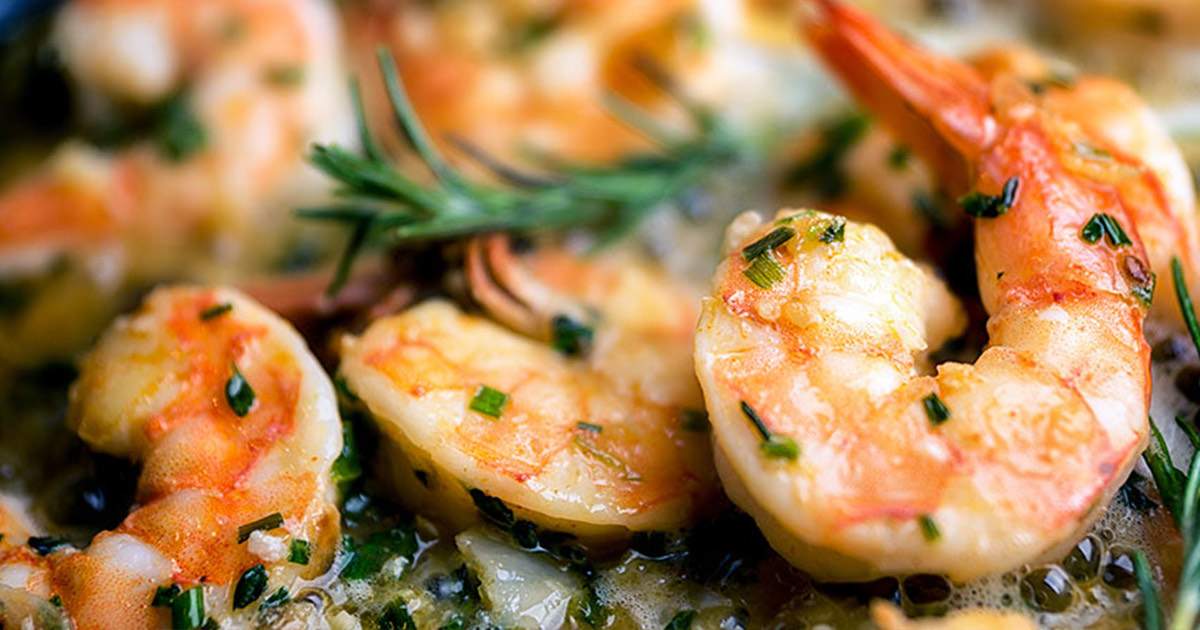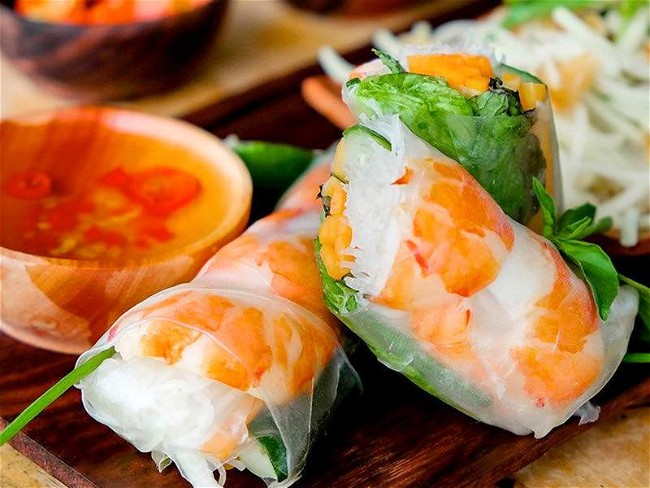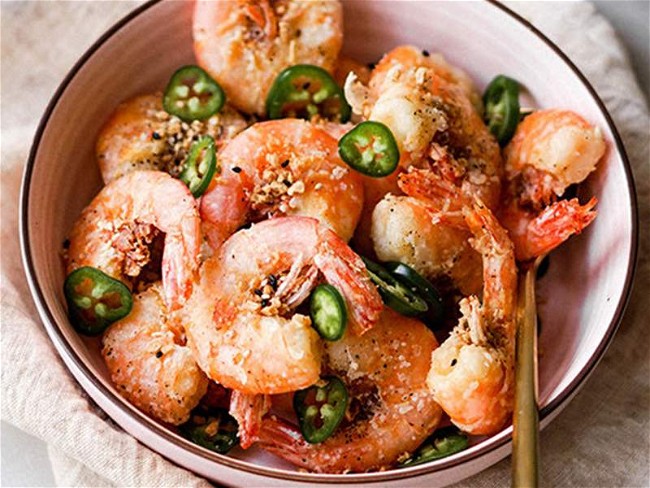Your Essential Guide to Shrimp

Shrimp has a rich history in America, starting long before it graced the sizzling platters of garlicky scampi or lined chic cocktail glasses. Native coastal communities from the Chesapeake to the Gulf harvested these sweet crustaceans for centuries, using simple nets and traps to catch what many considered a humble food. By the early 1900s, shrimp boats dotted Southern harbors as families built livelihoods around these creatures, their wooden trawlers returning heavy with ice-packed catches at dawn.
When refrigeration transformed America's relationship with seafood after World War II, shrimp broke free from coastal boundaries, becoming staples of restaurant menus and backyard barbecues across the country.
Each year, Americans consume over a billion pounds of shrimp, sourced from over 100 countries and representing over 340 species. We’ve teamed up with Fulton Fish Market’s head of quality control, Robert DiGregorio, to help you make the most out of each type of shrimp you’re likely to find so that you can become your table’s shrimp expert
- What is Shrimp?
- What Does Shrimp Taste Like?
- Types of Shrimp
- Is Shrimp Sustainable?
- What Pairs With Shrimp?
- How To Cook Shrimp
What is Shrimp?
Shrimp are small, ten-legged crustaceans found mostly in oceans and sometimes freshwater habitats around the world. Belonging to the suborder Pleocyemata, shrimp are known for their curved bodies, long antennae, and thin exoskeletons or shells. Shrimp are one of the most widely consumed seafoods globally, prized for their sweet flavor and versatility in cooking—whether grilled, sautéed, boiled, or served raw in dishes like ceviche.
What’s The Difference Between Shrimp and Prawns?
The terms “prawn” and “shrimp” are often used interchangeably, but there are real biological differences between the two. DiGregorio explains, “Even people in the seafood business will use the terms shrimp and prawns while talking about the same product.”
So, how can you identify shrimp vs prawns? Anatomically, prawns have three pairs of clawed legs, while shrimp have two. Their gill structures and how their body segments overlap also differ—prawns have straighter bodies, while shrimp have a more curled shape. Shrimp are also more commonly found in saltwater, and prawns are more common in freshwater or brackish environments.
What Does Shrimp Taste Like?
Shrimp is loved for its sweet, lightly oceanic flavor and firm texture that snaps when you bite into it. Shrimp’s mild flavors make it versatile for cooking preparations.
The flavors and textures of shrimp vary by species because of their different diets and habitats. When perfectly cooked, shrimp delivers a delicate balance of natural sweetness and subtle sea-kissed minerality, with deeper or colder sea species offering richer flavor profiles than their warmer cousins.
Types of Shrimp
Each of the 340+ types of shrimp brings their own unique flavor and story to the dinner table. Here are the most common shrimp varieties you'll find in American markets and restaurants:
- Blue Shrimp (Litopenaeus stylirostris), also called western blue shrimp due to their Pacific origin, stand out with their distinctive greenish-blue tint when raw. These treasures are harvested from Mexico’s Baja Peninsula down to Peru, where select blue shrimp producers earned shrimp’s first Fair Trade Certification for meeting rigorous social and environmental standards. Growing up to 9 inches, blue shrimp deliver firm, substantial meat that holds up to grilling, and their perfect balance of saltiness and sweetness makes them perfect additions to stews. Their season typically runs from September through March, with April through August off limits for spawning season.
-
Whiteleg Shrimp (Litopenaeus vannamei) represents the most widely farmed shrimp globally, particularly throughout Mexico and Southern Asia. These adaptable creatures, recognizable by their translucent bodies with slight bluish tails, typically measure 4-8 inches when mature. Their mildly savory flavor and medium-firm texture make them extremely versatile kitchen staples. Predominant in stir-fries, curries, and noodle dishes across Asian cuisines, these shrimp absorb surrounding flavors beautifully while maintaining their pleasant texture when properly cooked. Availability remains consistent year-round due to controlled farming operations.
-
White Shrimp (Litopenaeus setiferus), also called Gulf white shrimp, feature greenish-gray bodies and distinctive yellow bands on their tails. “The meat is firm, sweet, and mildly flavored, with a pleasing pink color when cooked,” DiGregorio shares of this beloved species. White shrimp grow up to 8 inches and are the foundation of countless Southern US classic dishes from gumbo to shrimp and grits. April-June and September-November are the prime harvesting months for these American treasures.
-
Pink Shrimp (Farfantepenaeus duorarum), with their distinctly rosy shells, deliver what many Gulf Coast chefs consider the perfect shrimp flavor–prominently sweet with gentle mineral notes. Growing to around 5 inches, these delicate pink shrimp are particularly abundant around Florida's shores during winter and early spring. Their natural sweetness pairs beautifully with spicy Creole and Cajun preparations, providing a counterbalance to the heat. Pink shrimp also stand alone as a stellar selection for shrimp cocktails.
-
Brown Shrimp (Farfantepenaeus aztecus) have reddish-brown shells and are the most abundant Gulf variety. Reaching up to 7 inches long, brown shrimp offer a more pronounced mineral flavor that gives them a true “shrimpy” taste. Their firm texture holds up exceptionally well to robust cooking methods, making them favorites for boils, deep frying, and hearty stews. Peak season for brown shrimp runs from May through September.
-
Royal Red Shrimp (Pleoticus robustus), simply called red shrimp, remains one of America's best-kept seafood secrets. Harvested from extraordinary depths exceeding 1,200 feet in the Atlantic and Gulf waters, these scarlet beauties develop a uniquely rich, sweet flavor often compared to lobster or sweet crab. Their limited seasonal availability, typically late summer through early winter, and specialized deep-sea harvesting requirements make them precious finds worth seeking out for special occasions. We find royal red shrimp shine best in raw or simple preparations like ceviche that let their natural character take center stage.
-
Argentinian Red Shrimp (Pleoticus muelleri) have rapidly gained popularity in American markets for their striking resemblance to lobster, both in their bright red natural coloration and their remarkably sweet, rich flavor profile. Wild-caught off Argentina's coast, Argentinian red shrimp reach up to 9 inches in length and cook faster than other species due to their naturally higher sugar content. Just like royal red shrimp, Argentinian red shrimp’s buttery texture and pronounced sweetness make the species perfect for simple preparations. These deep-sea shrimp are most commonly available from October until March.
-
Tiger Shrimp (Penaeus monodon), also called tiger prawns, command attention with their dramatic black stripes against gray-blue shells that turn bright red when cooked. These impressive giants can grow up to 13 inches long and are primarily farm-raised throughout Asia. With a pronounced snap to their texture and a more robust flavor than other varieties, tiger shrimp have become staples in sushi preparations where both their size and sweet flavor are showcased. While once seasonal, aquaculture now provides year-round availability and accounts for the majority of tiger shrimp production.
- Spot Prawns (Pandalus platyceros), contrary to their popular name, are indeed shrimp. Although less common than the other species listed, these Pacific Northwest treasures deserve special mention for their US popularity in-season and exceptional eating quality. Recognizable by their distinctive white spots on reddish shells, spot prawns deliver extraordinarily sweet, delicate meat that literally melts in your mouth. These characteristics come from their deep, cold, and kelp-rich habitats from Alaska to California. Spot prawns are mostly wild-caught with traps, also called shrimping pots, from spring until early fall. Spot prawns’ delicate nature makes them best enjoyed with minimal preparation–raw, simply steamed, or quickly sautéed to preserve their remarkable flavor and texture.
Is Shrimp Sustainable?
Shrimp sustainability largely depends on the species and harvesting methods. Shrimp are harvested through various farming and wild catch methods, each with their own sustainability considerations. We’re proud to make these considerations easy for you by sourcing only the most sustainable shrimp from Fair Trade Certified producers.
Unfortunately, not all shrimp is harvested responsibly. Unsustainable shrimp farming practices—such as overcrowded ponds, excessive antibiotic use, and destruction of coastal mangrove forests—can lead to severe environmental damage, including water pollution and loss of biodiversity. These operations often lack transparency and may also involve poor labor conditions. That’s why it’s essential to buy shrimp from a trusted source that considers environmental and ethical standards. Choosing responsibly sourced shrimp helps protect marine ecosystems and supports communities committed to sustainable seafood. You can learn more about Fulton Fish Market's sustainability standards.
Shrimp Farming Methods
Farmed shrimp accounts for the majority of America’s shrimp consumption each year, alleviating pressure on our oceans’ populations from the ever-growing demand for these delicious crustaceans. Responsible shrimp farming operations prioritize balanced resource usage, safety without the use of harsh chemicals or antibiotics, and fair treatment of workers.
-
Pond farming, sometimes called mangrove farming, remains the most widespread method, especially in mangrove regions like Thailand, Vietnam, and India. Producers clear out coastal mangrove forests to make ponds, where shrimp benefit from natural filtration and nutrient cycling. When properly managed, these operations produce high-quality shrimp while preserving crucial coastal ecosystems. Mangrove farming has been under close watch from government agencies in recent years to mitigate environmental risks and improve working conditions. As a result, we’re seeing more of these producers gain Fair Trade and other certifications for their improved practices.
- Recirculating Aquaculture Systems (RAS) are popular and advanced indoor farms that produce shrimp and other types of seafood in landlocked areas. RAS use sophisticated filtration to continuously recycle and purify water, reducing waste and contamination. These facilities can operate far from coastlines while maintaining precise control over growing conditions year-round. Similar systems, called biofloc systems, process the natural waste in these farms into supporting nutrients, helping to reduce the feed resources needed to grow shrimp.
Wild Shrimp Catch Methods
Like most seafoods, the largest factors in wild shrimp fisheries are population management and environmental impact. Regardless of the types of shrimp or catch method, governing agencies like NOAA Fisheries and state fish & wildlife departments strictly enforce catch regulations that ensure US shrimp populations are abundant for generations to come.
-
Trawling is the most common wild harvesting method for commercial shrimp. In fact, you may have even seen it in action from Tom Hanks’ namesake character in Forrest Gump. Shrimp trawling uses specialized nets that drag behind boats through abundant shrimp grounds. These nets capture shrimp swimming near the ocean floor or in mid-water columns during peak seasons. This method allows immature shrimp to pass through the nets before surfacing and sorting onboard.
-
Shrimp pots, also called traps, offer a more selective approach to wild harvesting shrimp. Similar to crab or lobster traps, these baited containers are dropped on the seafloor and retrieved after shrimp enter some hours later. This method significantly reduces bycatch and allows immediate release of undersized shrimp, making it particularly effective for premium species like spot prawns.
- Cast netting targets shrimp in shallow coastal waters and mangroves, while seine netting uses large nets deployed from shore or small boats to encircle shrimp schools in bays and estuaries. Both methods are commonly used for smaller-scale operations and specific local fisheries.
Is Shrimp Good For You?
Absolutely, shrimp is a healthy choice! Shrimp offers exceptional nutritional benefits, making it an excellent choice for health-conscious diners and those following various dietary plans, from keto to Mediterranean diets. A single 4-oz (113g) serving of shrimp contains approximately 120 calories, 23 grams of high-quality protein, up to 2 grams of fat, and 0 grams of carbohydrates. Shrimp is also a good source of vitamin B12, selenium, phosphorus, and iodine.
Understanding Shrimp’s Formats: Deveined, Peeled, and More
Shrimp is sold in several formats to suit different cooking needs. The right kind for your next shrimp meal depends on how much prep you want and how you plan to cook your shrimp. Peeled and deveined shrimp are ready to cook when thawed, ideal for quick meals like stir-fries, pastas, or shrimp tacos. Whole shrimp, with heads and shells intact, hold up better to more intense preparations like grilling and give a more dramatic presentation on the plate. Easy peel shrimp are partially shelled with a cut down the back of the shell, making them a great middle ground for dishes like shrimp boils, where you want flavor from the shell but easier prep at the table.
What Pairs With Shrimp?
Shrimp's sweet, mild flavors pair beautifully with both bold and delicate accompaniments across countless cuisines.
Traditional Shrimp Accompaniments:
-
Garlic and butter are the quintessential combination that enhances shrimp's natural sweetness. Combine these ingredients with your shrimp for a classic backyard grilling experience. Butter can also be substituted with any fat source, depending on your meal or cuisine. For example, you can use olive oil to complement Italian dishes or sesame oil for an Asian flair.
-
Citruses like lemon and lime brighten shrimp's oceanic flavors and balance out rich preparations like frying or poaching. Consider using milder citrus fruits like orange for subtle brightness in light preparations like shrimp ceviche.
- Fresh herbs like cilantro, parsley, dill, and basil complement shrimp without masking its delicacy. Shrimp can absorb the flavors of fresh herbs in seconds in a hot sauté pan or minutes in the oven.
Wine Pairings For Shrimp:
-
Sauvignon Blanc perfectly complements shrimp’s briny sweetness with a crisp acidity and citrus notes.
-
Pinot Grigio is a refreshing wine pairing for shrimp. It is clean and light, complementing shrimp without competing for your taste buds.
-
Champagne or Prosecco cleanses your palate with bubbles between bites, helping you enjoy your shrimp dish to the fullest. We highly recommend a fizzy wine like these when pairing wine with a heavier shrimp meal.
- Dry rosé offers versatility that works with both simple and spiced shrimp dishes. Rosé is a do-it-all shrimp pairing that especially complements pink shrimp in both flavor and color.
How To Cook Shrimp
Cooking shrimp is quick and easy, making it perfect for busy weeknights. Shrimp cooks in just 2-4 minutes and turns pink when done. You can cook shrimp by grilling, sautéing, boiling, baking, or frying for delicious results every time. Here are some of our favorite easy shrimp recipes to try:
Fresh summer rolls are a favorite enjoyed at Vietnamese restaurants, but they're so easy to recreate at home. We love them with shrimp, but you can also make them with lump crabmeat, seared scallops, or cooked fish. Get the kids involved in wrapping and rolling - just treat the rolls like small burritos!
Easy Salt & Pepper Shrimp Recipe
This easy salt and pepper shrimp recipe from Fulton friend Eat Cho Food is shrimply the best! Forget about takeout! Stay in and make this 5-ingredient, ready in 10-minute classic, easy shrimp recipe.
Katie Lee Biegel's Sheet Pan Shrimp Recipe
The busy cook’s best friend: frozen shrimp and a sheet pan. This high-protein, flavor-packed recipe, created by our Culinary Curator Katie Lee Biegel, comes together fast—just thaw the shrimp while the oven preheats and prep the veggies and sauce.
FAQs
Is shrimp high in cholesterol?
While shrimp is naturally higher in cholesterol than finfish and some other proteins, its HDL cholesterol, considered “good” cholesterol, and omega-3 fatty acid content reduce the negative impact of LDL cholesterol, or “bad” cholesterol. Learn more about seafood’s impact on cholesterol and other health benefits.
Can dogs eat shrimp?
Yes, dogs can eat plain, cooked shrimp in moderation as an occasional treat, according to the American Kennel Club. However, shrimp should be peeled, deveined, and thoroughly cooked without seasoning, garlic, or butter, as these can be harmful to dogs. Always consult your veterinarian before introducing new foods to your dog's diet.
How do shrimp sizes work?
Shrimp sizes are based on the number of shrimp per pound, indicated by count ranges like 21/25 (21-25 shrimp per pound) or U10 (under 10 shrimp per pound). The lower the number, the larger the individual shrimp. You can learn more about shrimp sizing with our handy Shrimp Size Chart.
Can pregnant women eat shrimp?
Yes, in fact, shrimp is a recommended protein choice for pregnant women by the FDA. Pregnant women can safely eat shrimp that is responsibly handled and fully cooked, with benefits including omega-3 fatty acids to support a baby’s brain development. The FDA recommends that pregnant women consume 2-3 servings of low-mercury seafood like shrimp each week. Always consult with your doctor for personalized pregnancy diet recommendations. Make sure shrimp is cooked to an internal temperature of 145°F and avoid raw preparations during pregnancy.
Can I eat shrimp tails or heads?
Yes, you can eat both shrimp tails and heads! You can fry them separately from the shrimp meat for a crunchy snack or enjoy them as part of the whole shrimp. It’s important to ensure both shrimp heads and tails are thoroughly cooked for easy digestion and pleasant eating. Shrimp heads and tails also make for exceptional flavor enhancers in sauces and soups. Be sure to strain them out before serving.
Are shrimp shells edible?
Shrimp shells are generally edible and best enjoyed when fried, as cooking them thoroughly softens their texture. Made of chitin—a fibrous material—they can be tough to chew or digest if undercooked. Because shrimp shells are packed with flavor, they’re also excellent for enriching stocks and sauces. Just be sure to strain them out before serving to maintain a smooth, pleasant texture in your meal.
Is the vein in shrimp poop?
“We’ve all wondered exactly what that dark line sometimes found along the back of shrimp is,” says DiGregorio. The vein in shrimp is the intestinal tract, and while it is safe to eat, it may have an unpleasant, gritty texture and is easily removed by peeling it away from or prying it off the shrimp with the tip of a knife. This vein is less visible and unpleasant in species that live in rockier habitats like spot prawns.
Is all shrimp frozen?
Not all shrimp are frozen, but most shrimp come frozen for good reasons! Shrimp spoil quickly after harvest, so freezing them at peak freshness helps preserve their flavor, texture, and nutritional value. Freshly frozen shrimp are typically frozen at extremely low temperatures shortly after catch or harvest, locking in quality without the need for additives. In contrast, fresh shrimp that haven’t been frozen are often treated with chemicals like sodium tripolyphosphate to retain moisture and extend shelf life. Check out our blog to learn more about fresh versus frozen seafood.



